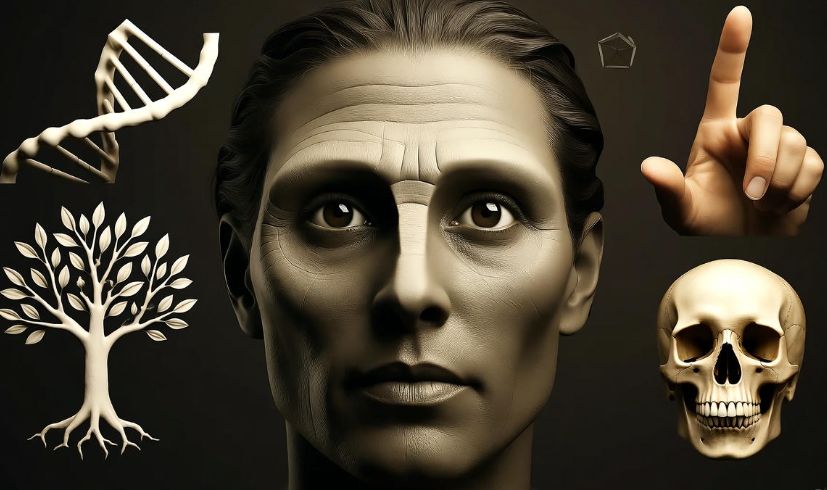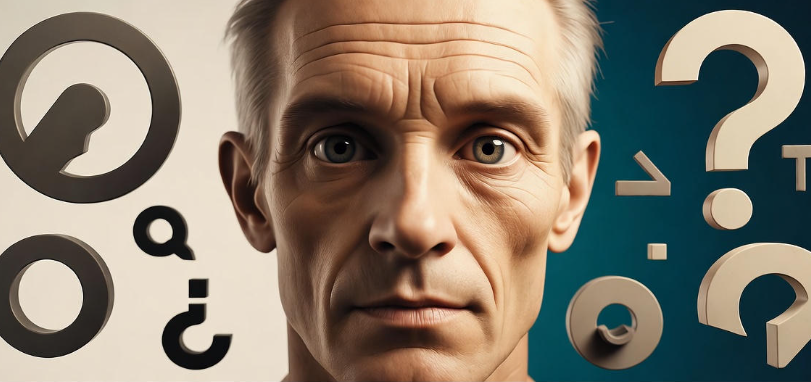Humans are truly one of nature’s most fascinating creations. We share more than 98% of our DNA with chimpanzees, yet we’ve built cities, composed music, explored space, and invented the internet. 🧬 So, what exactly sets us apart? How did we evolve into beings who question our own existence? This journey of human uniqueness is a mix of biology, intelligence, emotion, and culture — all woven together through millions of years of evolution.
The story begins with evolution itself
Around 6 to 7 million years ago, our ancestors split from the lineage that led to modern chimpanzees. Over time, many species of early humans appeared, each with small differences — larger brains, upright walking, tool use, and social behavior. Eventually, Homo sapiens emerged, standing out as the species that combined intelligence with creativity, cooperation, and self-awareness.
Unlike other animals, humans didn’t just adapt to the environment — we began to change it. We learned to make tools, control fire, and develop languages to share ideas. This ability to shape the world instead of merely surviving in it marks a turning point in evolution.
The human brain — nature’s masterpiece 🧠
If there’s one thing that makes humans unique, it’s our brain. It’s not the biggest in the animal kingdom, but it’s remarkably efficient and complex. Humans have a large prefrontal cortex, which handles decision-making, planning, creativity, and understanding others’ emotions.
Let’s look at a small comparison:
| Species | Brain Size (approx.) | Key Abilities |
|---|---|---|
| Chimpanzee | 400 cm³ | Tool use, basic communication |
| Dolphin | 1,600 cm³ | Social intelligence, empathy |
| Human | 1,350 cm³ | Language, reasoning, creativity, morality |
Even though dolphins have large brains, humans use theirs in a completely different way — combining logic, memory, and imagination. Our brain’s ability to simulate possible futures and make moral judgments is what gives us the edge in evolution.
Language — the voice of thought
Language is more than just words. It’s the ability to share abstract ideas, emotions, and plans. Other animals communicate, of course — birds sing, bees dance, whales call — but humans use symbols and grammar to express infinite meanings.
For instance, a sentence like “Tomorrow I might visit the moon” has no immediate physical meaning, yet your mind instantly understands it. This shows how language lets us imagine, dream, and collaborate on complex goals. Without language, there would be no civilization, no science, and no shared culture.
The power of imagination and creativity 🎨
Have you ever thought about how strange it is that humans paint pictures, write poetry, or compose songs — none of which directly help us survive? Yet these creative acts have been with us for tens of thousands of years.
Our ancestors painted caves in France, carved symbols, and told stories around the fire. These activities may not seem essential, but they created social bonds, passed down knowledge, and shaped human identity. Imagination gave us the ability to think beyond survival — to dream, invent, and innovate.
Even today, creativity fuels progress. Every scientific discovery or technological innovation starts as a thought, an imagined possibility.
Culture and cooperation — humanity’s secret strength 🤝
In the wild, strength and speed determine survival. But in humans, cooperation became our greatest tool. We learned to live in groups, share tasks, and pass knowledge to the next generation.
Unlike other species, humans developed cultural evolution, where ideas evolve faster than genes. One generation invents the wheel; the next one invents the car. This ability to build on previous knowledge created the rapid growth of civilization.
Culture isn’t just art or tradition — it’s how we share beliefs, technology, and social systems. It’s the invisible thread that connects us all.
Emotions — the heart of humanity ❤️
Emotions have always been a core part of being human. Love, empathy, guilt, pride, or hope — these are not just feelings but evolutionary tools. They help us form deep relationships and care for one another.
For example, empathy encourages cooperation. Love ensures we protect family and community. Even guilt keeps us from harming others, promoting trust within societies.
Animals feel emotions too, but humans experience them with greater depth and self-awareness. We can reflect on why we feel something, write songs about it, and change our behavior accordingly.
Consciousness — awareness of being aware
This is one of the most mysterious parts of human uniqueness. Consciousness means we don’t just exist; we know we exist. We can look in the mirror and recognize ourselves, think about the past, and worry about the future.
We can even imagine things that have never existed — like dragons or parallel universes. That’s a level of mental simulation that no other creature seems to possess.
The evolution of morality and social rules ⚖️
Humans live by systems of morality — the sense of right and wrong. These ideas evolved from our need to live peacefully in groups. Our ancestors realized that fairness, loyalty, and empathy made survival easier for everyone.
Over time, this turned into religion, law, and social norms. Today, morality isn’t just instinct — it’s discussed, debated, and sometimes even redefined through reason.
Hands and tool-making 🖐️
Another unique advantage is our hands. The human thumb can touch every other finger, allowing precise grip and manipulation. This simple feature allowed tool-making, art, and technology.
From sharpening stones to designing microchips — our hands helped shape our evolution as much as our brains did.
| Evolutionary Feature | Human Advantage |
|---|---|
| Opposable thumb | Precision and control |
| Upright posture | Hands free for tools |
| Bipedalism | Efficient movement |
| Speech organs | Complex communication |
Learning and teaching — passing the torch of knowledge 🔥
Humans don’t just learn; we teach. This is rare in the animal kingdom. We intentionally transfer knowledge to others — through speech, writing, and now the internet.
This “cumulative culture” means we don’t have to start from scratch every generation. It’s why a child today can learn math, read stories, and understand technology that took thousands of years to develop.
Humor and curiosity — small signs of deep intelligence 😄
Laughter and curiosity may seem trivial, but they show something profound. Humor builds connection and relieves stress — something only intelligent, social species can do.
Curiosity, on the other hand, drives exploration and learning. From looking at the stars to asking “Why?”, it’s curiosity that pushed us to create science, art, and philosophy.

Adaptability — surviving everywhere 🌍
From icy poles to hot deserts, humans have adapted to almost every environment on Earth. Instead of evolving thicker fur or longer limbs, we evolved intelligence to build clothing, shelters, and tools.
This mental adaptability is unmatched in nature. It’s why humans can even plan to live on other planets someday.
Technology — the extension of human mind
Technology is not just about gadgets; it’s an evolutionary extension of our body and brain. Fire extended our digestion, wheels extended our movement, computers extended our memory, and AI extends our reasoning.
Each innovation changes not just how we live, but also how we think. The relationship between humans and technology is now part of our evolutionary story — one that continues every single day.
Self-reflection — asking “Who am I?”
Perhaps the greatest sign of human uniqueness is our constant search for meaning. We question our purpose, origins, and destiny. We write philosophy, explore spirituality, and even debate what it means to be alive.
No other species is known to do this. It’s as if evolution gave us not just intelligence, but the desire to understand it.
FAQs about Human Uniqueness in Evolution
Q1: Are humans still evolving?
Yes, evolution never stops. Our genes continue to adapt to new diets, diseases, and environments — but now, culture and technology evolve much faster than biology.
Q2: How close are humans to chimpanzees genetically?
Humans share about 98.8% of their DNA with chimpanzees, but that tiny difference affects thousands of genes that shape our brain, language, and social behavior.
Q3: What single feature best defines humanity?
There isn’t just one. It’s the combination of self-awareness, culture, cooperation, and creativity that truly defines us.
Q4: Can other animals ever reach human-like intelligence?
Some animals like dolphins, crows, and apes show remarkable intelligence, but human-level abstract thinking and language have not evolved elsewhere — at least, not yet.
Q5: Why do humans create art or music?
Art and music are expressions of emotion, imagination, and connection. They help us communicate feelings beyond words and strengthen social bonds.
Final Thoughts
Humans are not the strongest, fastest, or biggest creatures on Earth. Yet, our mind, emotion, and imagination have allowed us to rise beyond the limits of nature. From ancient cave paintings to exploring Mars, we are driven by curiosity and creativity that no other species has shown.
Our uniqueness lies not just in our DNA, but in our ability to dream, to love, and to wonder. 🌌 Evolution gave us the tools — but how we use them continues to shape the future of humanity itself.

Leave a Reply